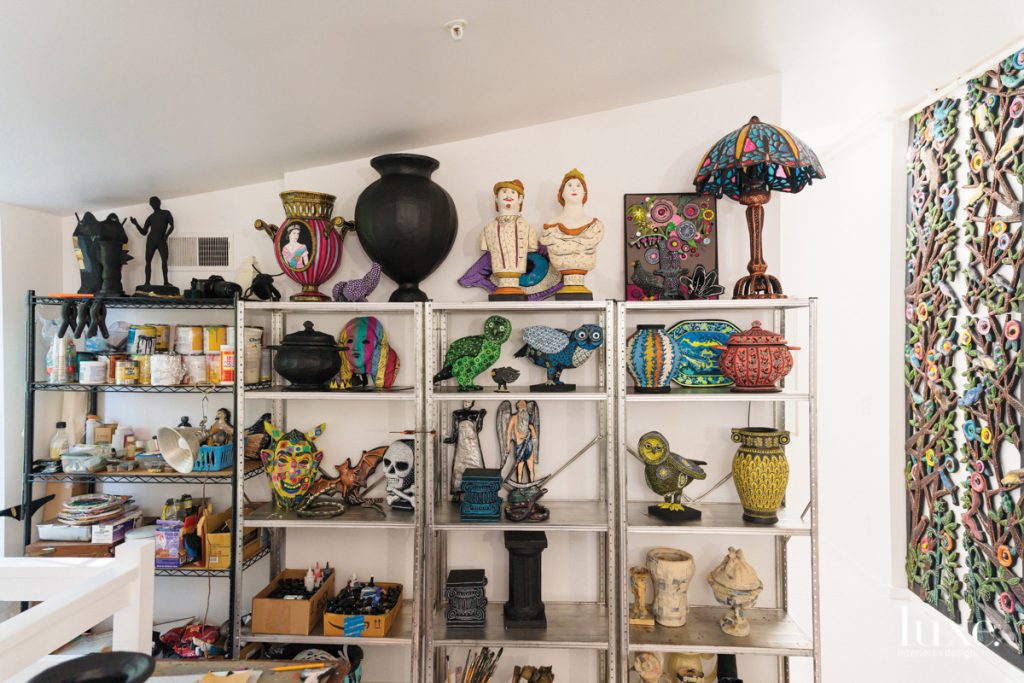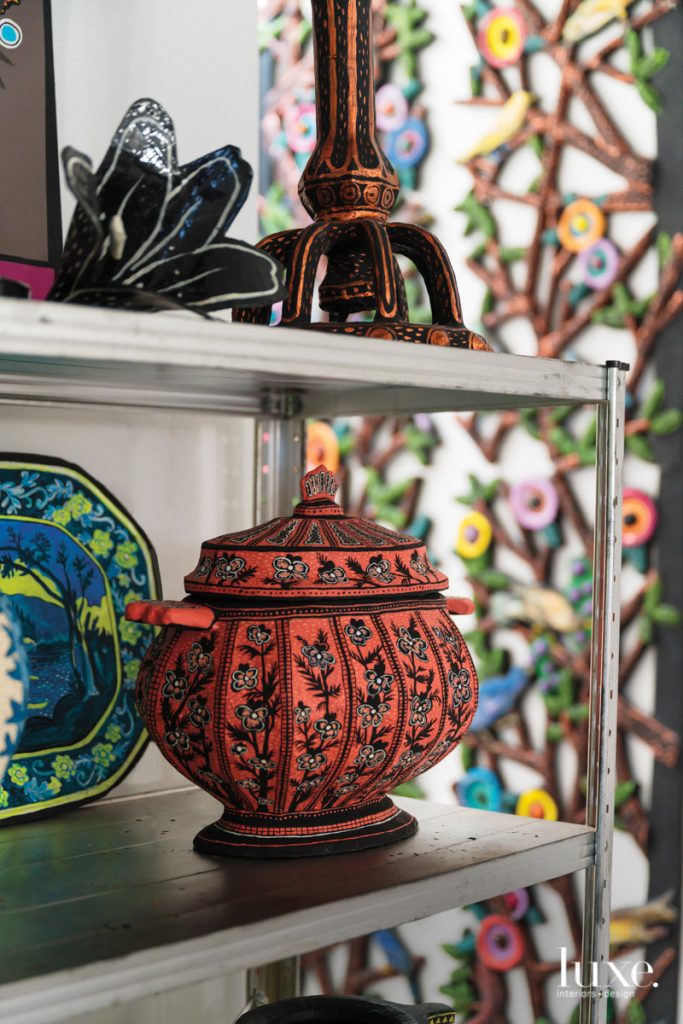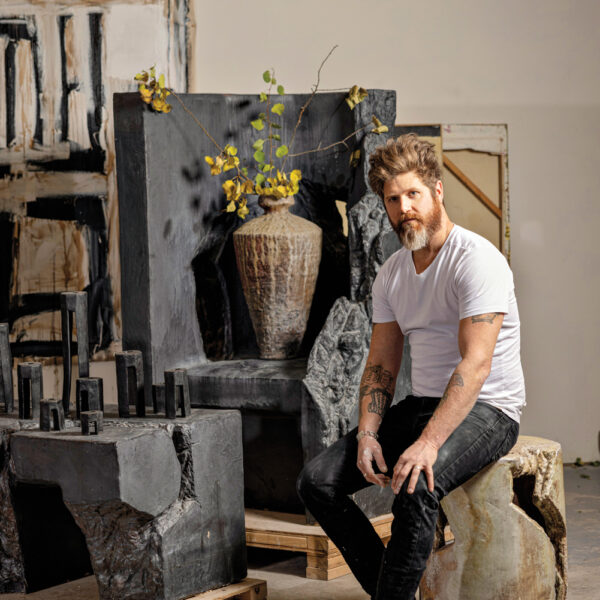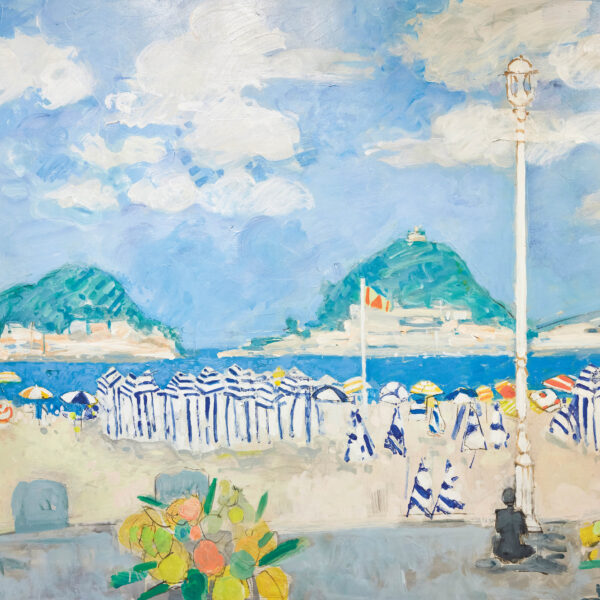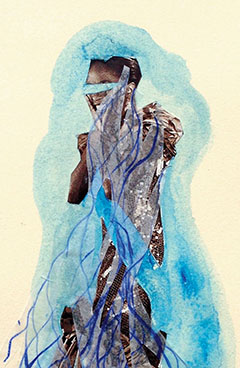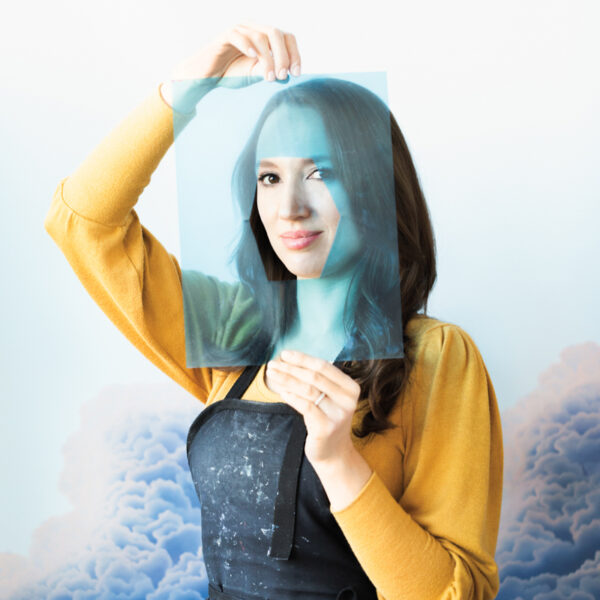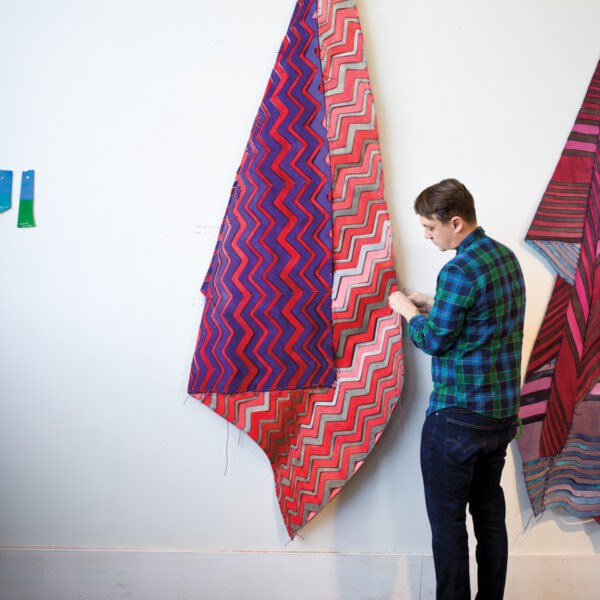Painter and sculptor Mark Gagnon says his childhood passion for art was so strong that his mother–who kept an “immaculate” house–allocated an entire spare room for him to work on messier projects. “Needless to say, we were both happy with the decision!” he recalls.
After studying art at Ohio State University, Gagnon moved to New York to become a painter, later “stumbling” into a career in book illustration. But ultimately his love for that most messy of crafts–papier-mache–won out. Today, Gagnon works primarily in the discipline, creating elevated sculptures, wall reliefs, urns and vases, and even elaborate window displays for the likes of Bergdorf Goodman. “What I really enjoy about this medium is taking something lowbrow and turning it into a really beautiful object,” he says. “It gives it a kind of a street cred, and then, when I put my spin on it, it ends up with a finished feel and just a slight sense of humor.”
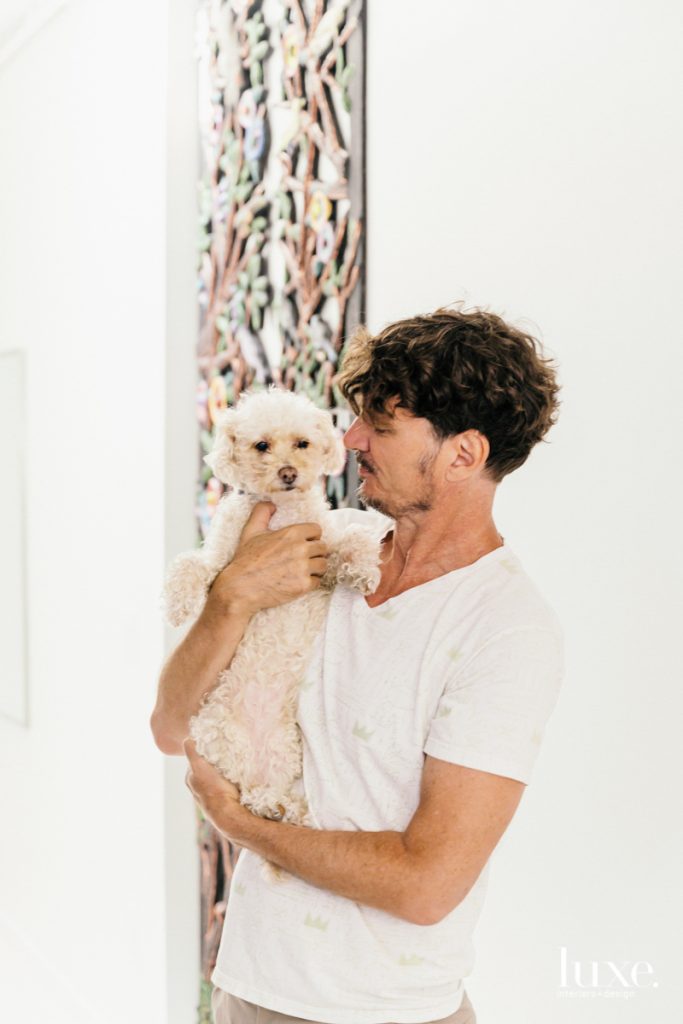
Artist Mark Gagnon with his dog, Oogie.

Artist Mark Gagnon with his dog, Oogie.
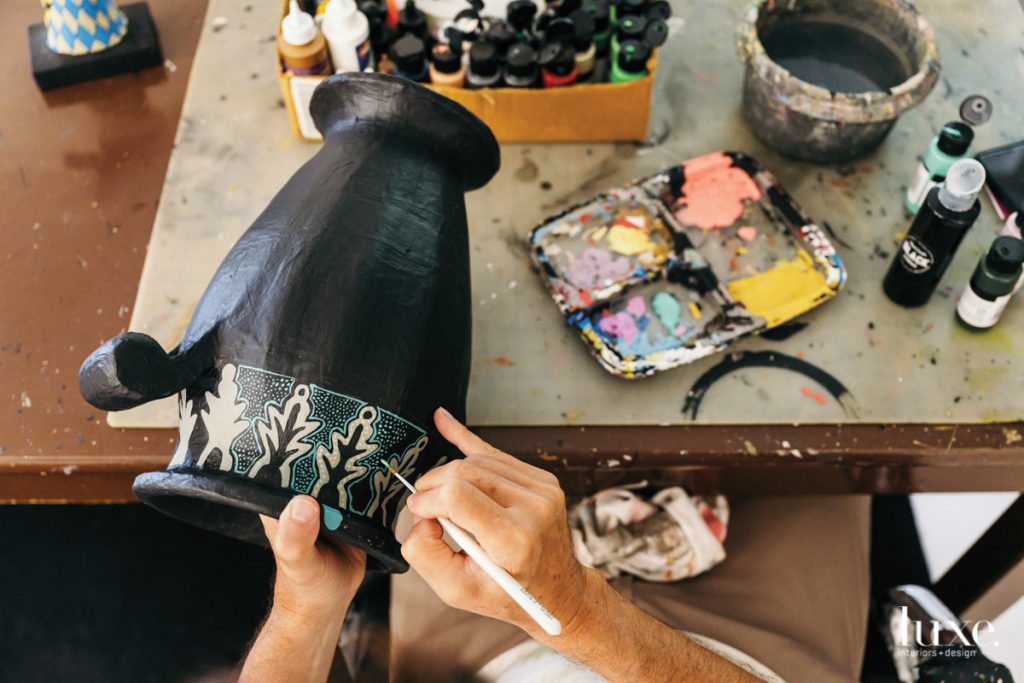
Gagnon uses an intricate rib vaulting process to elevate papier-mache into hand-painted urns.

Gagnon uses an intricate rib vaulting process to elevate papier-mache into hand-painted urns.
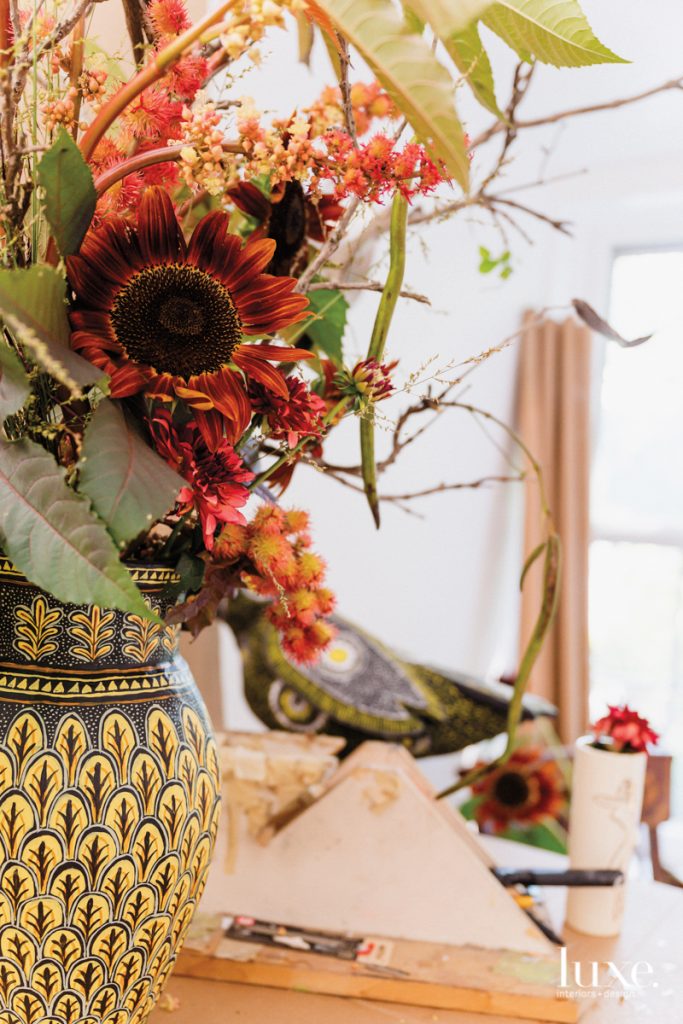
The artist also creates objects, sculptures and water-friendly vases.

The artist also creates objects, sculptures and water-friendly vases.
Initially, Gagnon began fashioning his sculptures by using an existing product–say, a plastic urn from Home Depot–as a mold and covering it. But he always felt those pieces “had a feeling of being this sort of a homogenized object that wasn’t very sophisticated,” he says. “So I started playing around with different methods, and the thing that really made the leap for me is when I started using rib vaulting.”
This technique involves cutting out little “ribs” and gluing them around a cylinder. For added support, Gagnon layers masking tape over the top, creating a sturdy skin. “At this point, I can pretty much make anything I see out of this method,” he says. “It allows me to keep everything super light, and it’s a very inexpensive medium that’s pretty durable.”
To create the shell, he applies multiple layers of newspaper using a clay-based, ready-made paste. “I would say one hefty section of the New York Times makes a small urn,” he estimates. “It doesn’t take that much paper–the trick is keeping it constantly overlapping, which makes it strong.”
These days, says Gagnon, clients tend to prefer a matte finish, which he achieves by using a flat black house paint as a base, and then decorating the surface with various patterns–typically a combination of dots. While occasionally he’ll use resin to “glitz up” various pieces, more often he employs the shiny medium to line the insides of his vases.
After a fruitful conversation with florist Emily Thompson, Gagnon devised the solution, which, aided by a glass insert, renders the paper vessels fit to hold flowers. Recently, this dialogue between papier-mache and floral has expanded further, thanks to cross-collaborations with the artist’s partner, florist Django Voris. (The two are opening a concept shop where Gagnon’s works will mingle with Django’s unique plants and florals.)
While sometimes Gagnon sets out with this kind of specific vision in mind for his creations, other times he simply “lets his inner artist out,” allowing things to evolve organically. “To be honest, there are a lot of duds,” he laughs. “But then, there are a lot of things that lead to big successes.”


